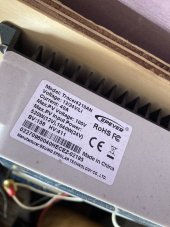Hogheavenfarm
Regulation Stifles Innovation
- Joined
- Jun 24, 2022
- Messages
- 432
Here is what I am attempting, maybe its completely out of line, hopefully not -
I want to add a DC 12-24v LED reading lamp to the load terminals of the SCC. (Epever Tracer 6415, I assume most of the AN series is similar).
Pressing the select button on the SCC turns on/off this port, and the MT-50 remote allows me to enter some voltage parameters and such, but no matter what I do, it simply does not work, there is no power to the lamp at all. The manual (SCC) is not clear at all on the port (seems to be #12 on the diagram - front left side port), and the MT-50 remote manual explains a bit more, but changing these seems to have no effect. Has anyone done this and if so, how I can accomplish this? How should I set these parameters? I would like the SCC to turn on this lamp at night (when PV voltage falls below 20v) and off when charging, but trying that setting doesnt activate the light.
I want to add a DC 12-24v LED reading lamp to the load terminals of the SCC. (Epever Tracer 6415, I assume most of the AN series is similar).
Pressing the select button on the SCC turns on/off this port, and the MT-50 remote allows me to enter some voltage parameters and such, but no matter what I do, it simply does not work, there is no power to the lamp at all. The manual (SCC) is not clear at all on the port (seems to be #12 on the diagram - front left side port), and the MT-50 remote manual explains a bit more, but changing these seems to have no effect. Has anyone done this and if so, how I can accomplish this? How should I set these parameters? I would like the SCC to turn on this lamp at night (when PV voltage falls below 20v) and off when charging, but trying that setting doesnt activate the light.





